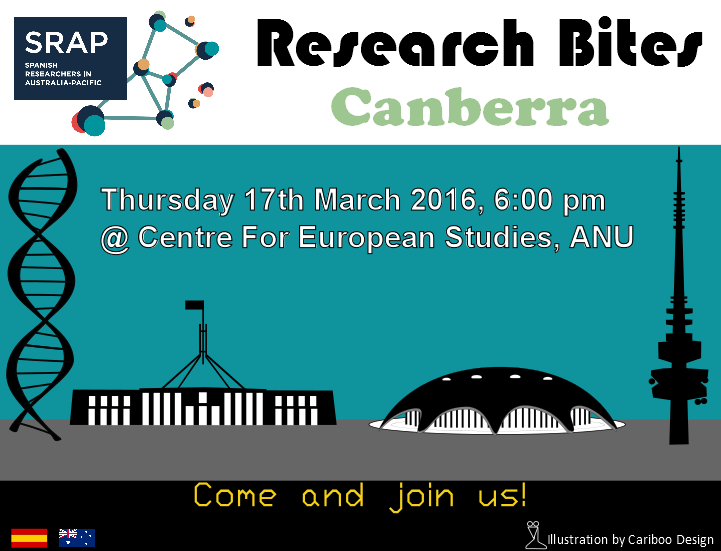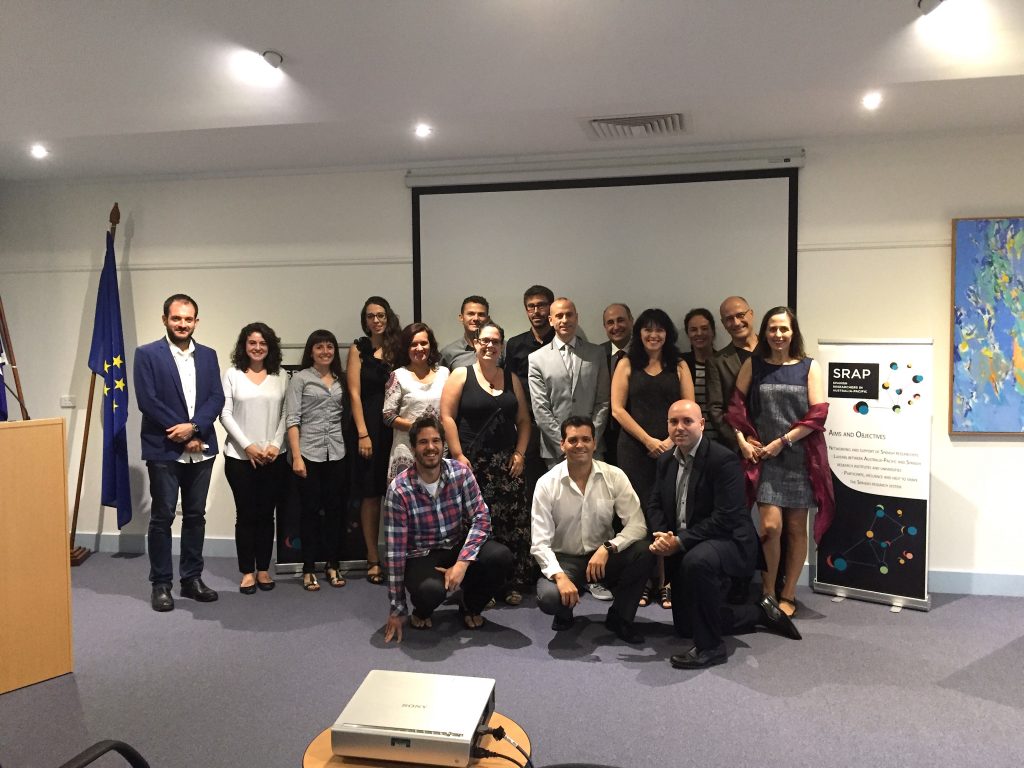El 17 de Marzo del 2016 la delegación en ACT de la Asociación de Investigadores Españoles en Australia-Pacífico (SRAP-IEAP) organizó el primer Research Bites en Canberra. El evento tuvo lugar en el Centre for European Studies (ANU, Australian National University) y estuvo organizado por Marina Trigueros (Cariboo Design) y Mar Racionero (Research School of Economics-ANU), ambas miembros de la SRAP-IEAP.
Mas de 20 científicos españoles se reunieron para hablar sobre sus investigaciones. Hubo 6 fantásticas charlas. La tarde fue muy interesante e interactiva. Desde plantas a ranas pasando por super ordenadores, los siguientes tópicos fueron discutidos:
- César Espada: Deputy Head of Mission (Embassy of Spain in Canberra). Felicitó a la SRAP-IEAP y explicó el evento de la Embajada española que la misma noche condecoró a Pablo Fernández Peñas con la Medalla al Orden Civil.
- Sergio León-Naval: Senior Lecturer (School of Physics-University of Sydney). Introducción sobre la SRAP-IEAP.
- Hugo Alonso Cantabrana: Postdoctoral Fellow (ANU-Research School of Biology- ARC Centre of Excellence in Translational Photosynthesis). On the way to a C4 supercharged rice. The C4 rice Project.
- Elena Martín Ávila: Postdoctoral Fellow (ANU-Research School of Biology- ARC Centre of Excellence in Translational Photosynthesis). Rubisco and its main role in CO2 photosynthetic assimilation.
- Pablo Rozas Larraondo: High Performance data analyst at National Computational Infrastructure. Providing Australian researchers with high-end computing services.
- Marta Vidal García: PhD candidate (ANU-Research School of Biology- Evolutionary biology & Ecology of reptiles and amphibians). Morphological evolution in Australian frogs.
Desgraciadamente no hubo tiempo suficiente para que todo el mundo pudiera dar una charla sobre su trabajo, sin embargo no hay que preocuparse ya que se van a organizar más Research Bites.
Enhorabuena a todos los participantes del primer Research Bites de la asociación SRAP-IEAP en Canberra!
El evento terminó corriendo hacia la ceremonia de entrega de la Medalla al Orden Civil a Pablo Fernández Peñas en la residencia del embajador de España.


